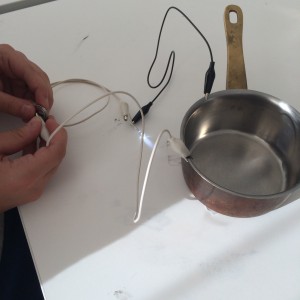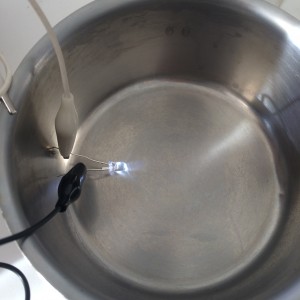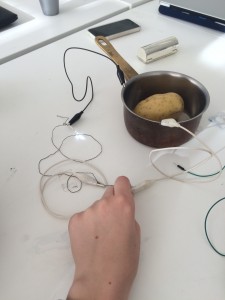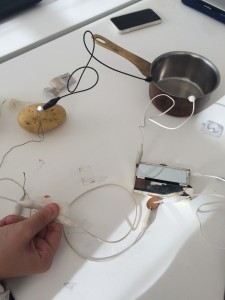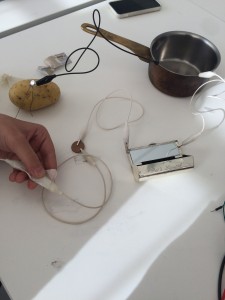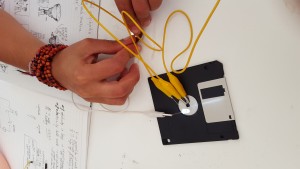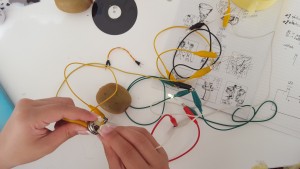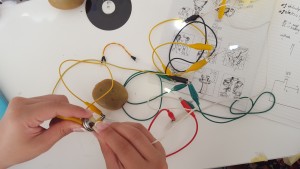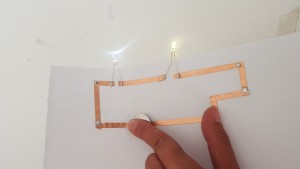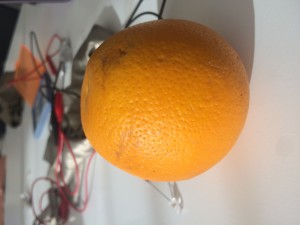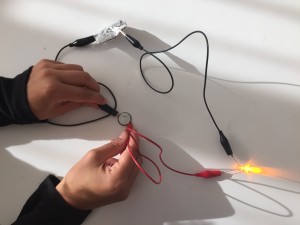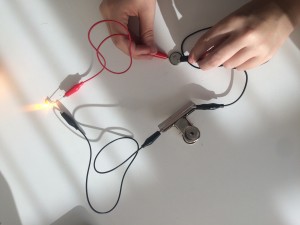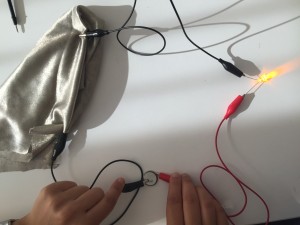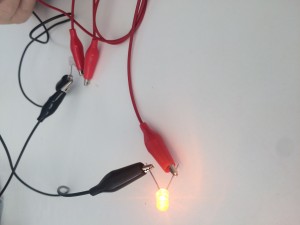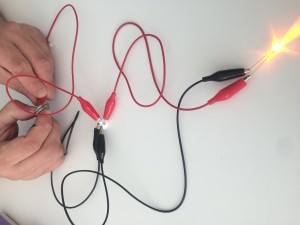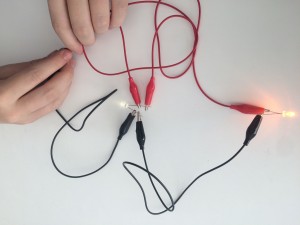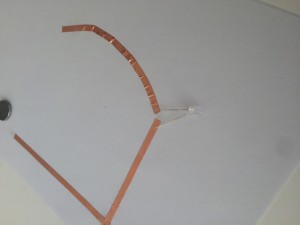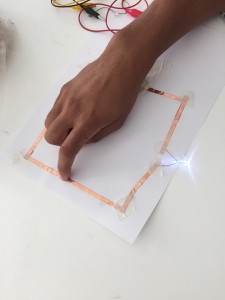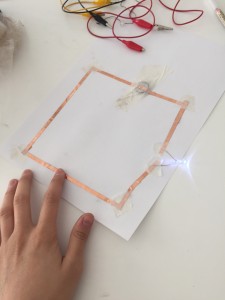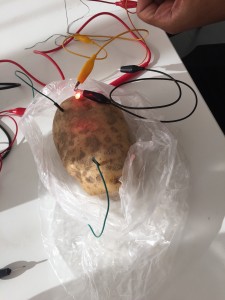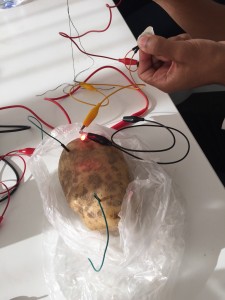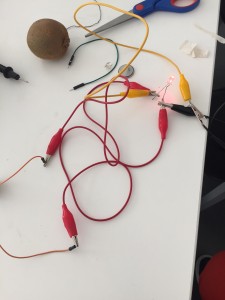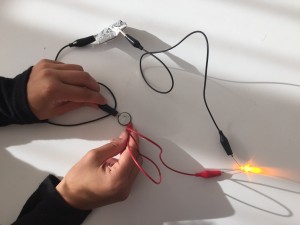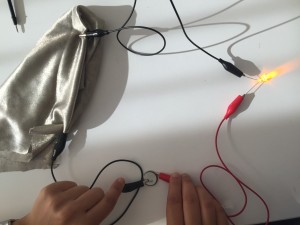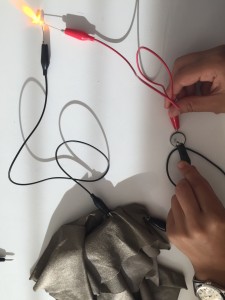Basic of electricity & electronic
Electronic Paper & origami
This presentation show some examples of project combining electronic and paper.
Tutorial for simple paper circuit.
http://cdn.makezine.com/uploads/2014/07/papercircuits.pdf
This tutorial gives an overview of paper engineering with resources and sample projects for inspiration.
The Fine Art of Electronics
http://simonetti.media.mit.edu/~jieqi/
Folding pattern examples
http://www.korthalsaltes.com/selecion.php?sl=new
Switches & simple circuit
This tutorial explains the basics of electricity with an overview of conductive materials, techniques for making circuit traces, and series/parallel circuit construction.
This tutorial explains the basics of switches and buttons, illustrates different categories, and gives examples of corresponding soft switches.
Dasha and Sanie. Experiment 1.
Through this experiment we found out that a pot is more conductive than the potato. We ended up using the potato as a stand for the LED, as it was not working.
First we create a simple circuit with the pot, a lithium battery and an LED.
Then we added the conductive thread to the circuit .
And finally, our circuit grew even bigger when we added a coin and a lipstick box, and used a potato as an LED stand.
Then we created a circuit with two batteries and two different LEDs.
Though we noticed that neither of the LEDs worked with just one battery even when we used the same LEDs. Though they both worked with two batteries.
experiment photos
First Circuits
EXPERIMENTS
I worked with Amanda during this first session.
She brought an orange that wasn’t conductive enough to light up the LED. Same case for the CD I brought, because it is covered by plastic.
Then we tried to use metals (a metallic clip, and a piece of aluminum): 
It worked!
Finally, we used these conductive fabrics:
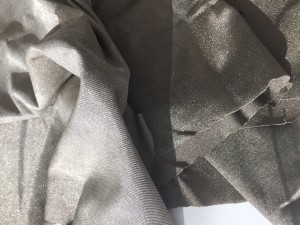
And it worked too!
We wanted to light up two LEDs on the same circuit. This is our process:
The first one only is turned on. To light up the second one, we needed a second battery of 3Volts.
Here’s the result:
We also used this black paint to connect the LED to the batterie and created a switch with the copper:
Conductive Objects Experiment
Group members:
Asher
Lanie
Ice
We’ve tried two items for their conductivity: a potato and a kiwi
The potato is more conductive than the kiwi.
One of the LED lights did not light up for an unknown reason.
Copper tape + Electric paint experiment:
Copper tape circuit worked really well, meanwhile electric paint did not.
We had to wait for it to dry for it to work.
Week 1: Experimenting With Circuits
For the first week of class, we experimented with the conductivity of different materials by making a circuit with a small battery and LED light.
Metallic clips work well as resistors
aluminium foil
We also used silver conductive fabric
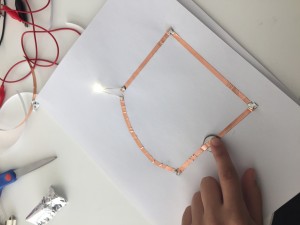
using copper tape to make a circuit

using carbon paint to make a circuit

soldering copper tape together to complete the circuit

we made a switch over the battery turn it on and off
Keyboard Hacking

